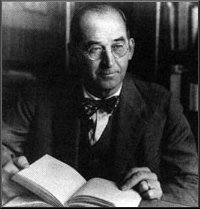|
HEMEROCALLIS (hem-er-o-KAL-is) Greek translates to "Beautiful for a Day" Dr. Arlow Burdette Stout (1876-1957)
 He majored in botany at the University of Wisconsin and earned a B.A. in 1909. His Ph.D. from Columbia University was attained four years later. In 1911, at age 35, A.B. Stout joined the staff of the New York Botanical Gardens and spent the ensuing decades there making an outstanding contribution to the evolution of the modern daylily, and was awarded the title "The Father of the Modern Daylily." His extensive breeding programs started in the 1920s . Seeds and species plants obtained from the Far East resulted in some 50,000 crosses and hundreds of thousands of seedlings. Meticulous records were kept, and many later published. During his tenure, A.B. Stout selected and introduced approximately 100 cultivars, many of which are still widely grown today. His first cultivar,"Mikado", was introduced in 1929 and offered for sale by The Farr Nursery Company of Weiser Park, Womelsdorf, Pennsylvania. Daylilies, by A.B. Stout, was published in 1934. This definitive work was reprinted by Sagapress Inc. in 1986 and still remains highly praised by hybridizers and back-yard gardeners alike. Dr. Stout's devoted research created a generous legacy that paved the way for other enthusiasts. From a handful of hybridizers at the turn of the century we now have thousands entering into the new millennium, with registered named cultivars in excess of 48,500 and rising, as the wave of popularity continues. That old-time favorite of pioneer days, has been transformed into a splendid bouquet of colour, texture, form and size. In 1946 the nonprofit American Hemerocallis Society was formed. The AHS is an international registry devoted to the promotion, propagation and advancement of daylilies. Their most prestigious award presented to a breeder annually is the Stout Silver Medal, in honor of Dr. A.B. Stout. Click here to hear the word hemerocallis spoken properly. Daylilies of A.B. Stout (Webpage author: The late Mike Murphy) Hemerocallis Species (Webpage author: Dr. J. Plodeck & Dr. J. Zhuang Plodeck) The New York Botannical Garden (NYBG Mertz Library) Daylily Varieties of Arlow Stout (Artur Jasinski) Descriptive Catalog of Hemerocallis Clones 1893 to 1948 (Digitized by Google) Authored by Cornell University Photo Reproduced (with permission) from: Daylilies by A.B. Stout Published by Sagapress Inc. 1986 (800-327-5680) |

